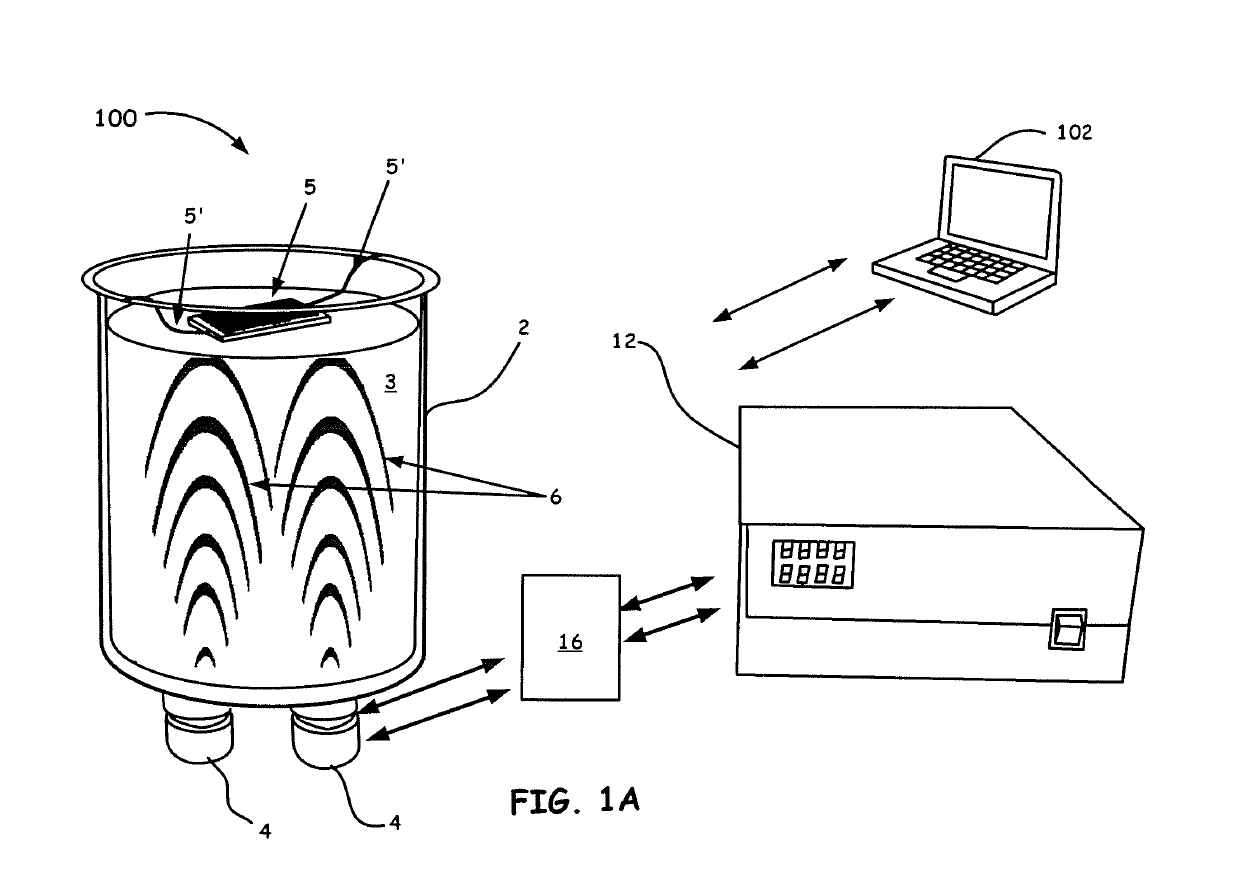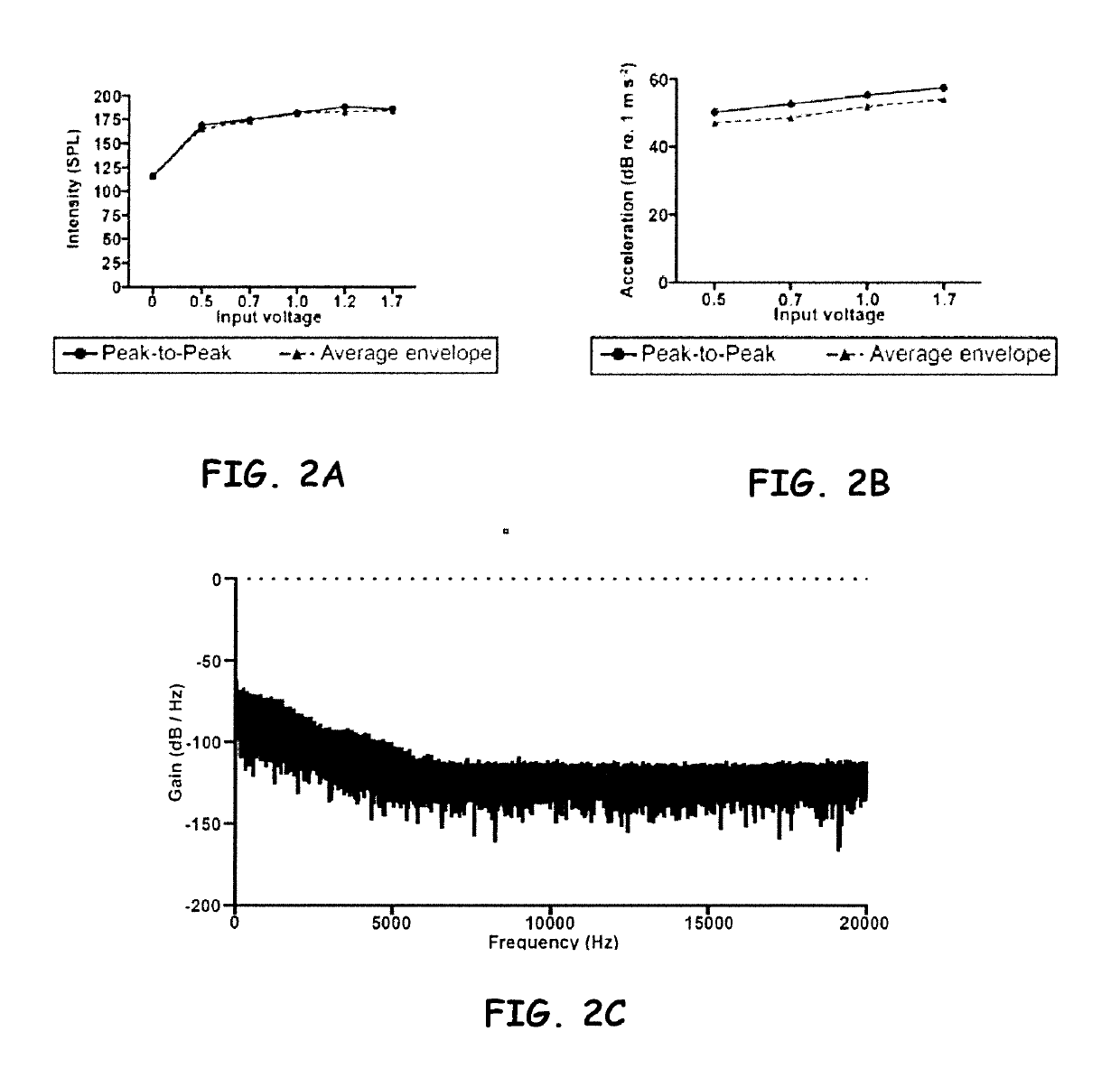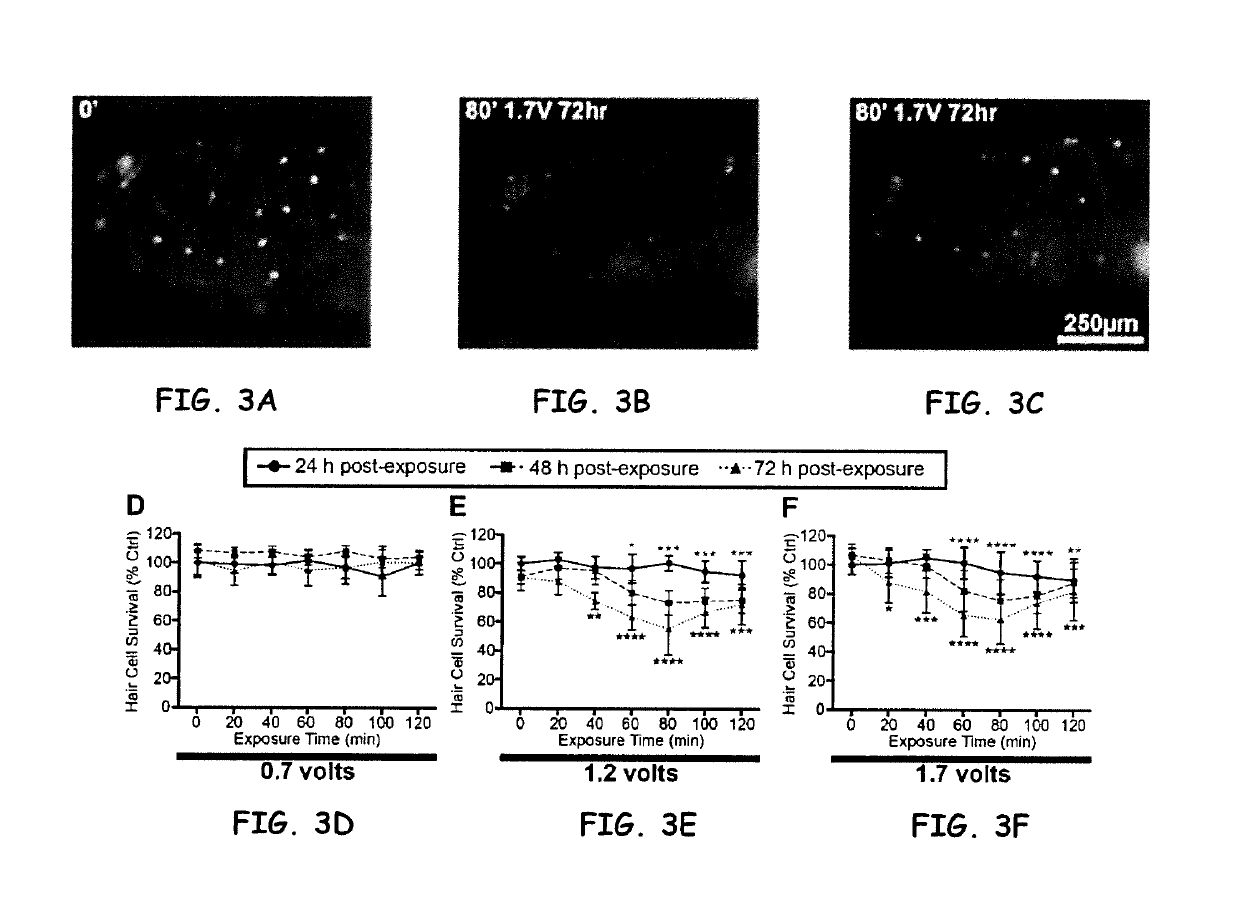Acoustic trauma system for larval fish
a technology of acoustic cavitation and larval fish, which is applied in the field of acoustic cavitation system, can solve the problems of permanent hearing impairment, lack of information about damage onset and progression, and slow target innovation as known and understood by ordinary skill users, and achieve the effect of accelerating understanding of acoustic trauma
- Summary
- Abstract
- Description
- Claims
- Application Information
AI Technical Summary
Benefits of technology
Problems solved by technology
Method used
Image
Examples
Embodiment Construction
[0008]An aspect of the embodiments herein include an acoustic cavitation system for noise intensity and time induced trauma, further including: a container configured to hold a disposed fluid; a well plate, wherein the well plate is removeably disposed therein the fluid in whole or in part; one or more elastic wave generators coupled to the container; an ultrasonic generator coupled to the one or more elastic wave generators, wherein the ultrasonic generator as coupled to the one or more elastic wave generators are configured to provide cavitation within the fluid via a plurality of sound pressures / intensities peak-to-peak of up to 188 (1 μPa) via an incremental supplied voltage range of up to 1.7 volts, and wherein the sound pressures / intensities are over an exposure time of up to about 120 minutes; and a controller / processor configured to provide control of the acoustic cavitation system and for data analysis.
[0009]Another aspect includes an acoustic method for assessing noise int...
PUM
| Property | Measurement | Unit |
|---|---|---|
| Pressure | aaaaa | aaaaa |
| Electric potential / voltage | aaaaa | aaaaa |
| Electric potential / voltage | aaaaa | aaaaa |
Abstract
Description
Claims
Application Information
 Login to View More
Login to View More - R&D
- Intellectual Property
- Life Sciences
- Materials
- Tech Scout
- Unparalleled Data Quality
- Higher Quality Content
- 60% Fewer Hallucinations
Browse by: Latest US Patents, China's latest patents, Technical Efficacy Thesaurus, Application Domain, Technology Topic, Popular Technical Reports.
© 2025 PatSnap. All rights reserved.Legal|Privacy policy|Modern Slavery Act Transparency Statement|Sitemap|About US| Contact US: help@patsnap.com



